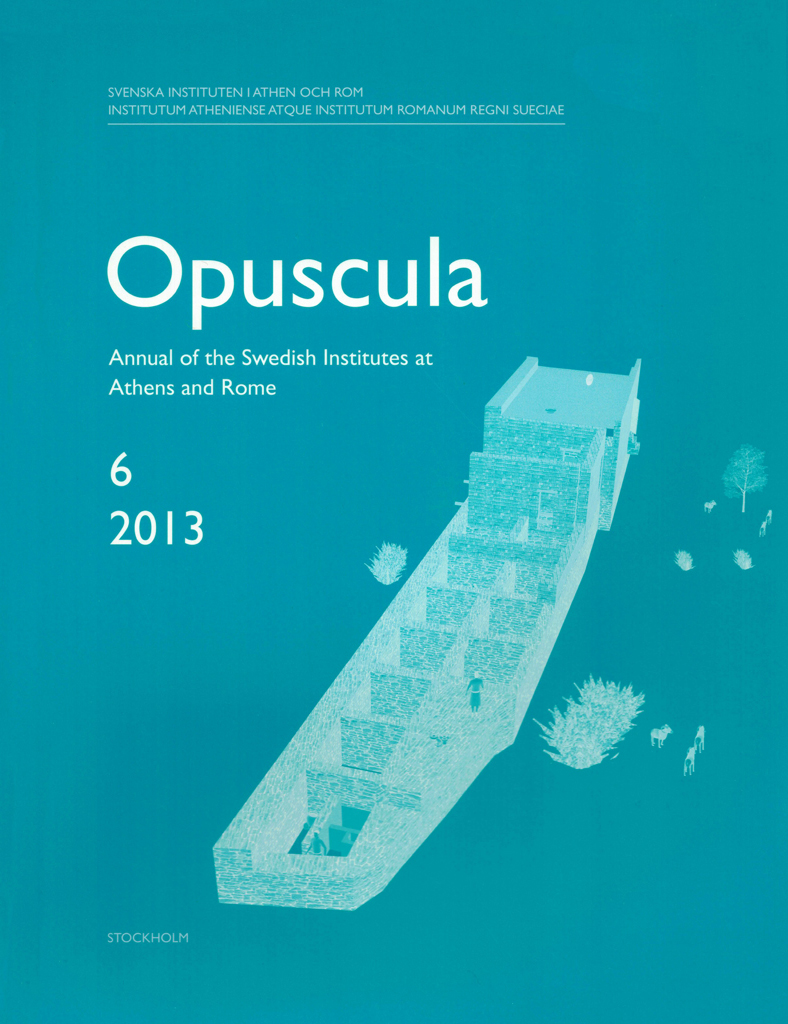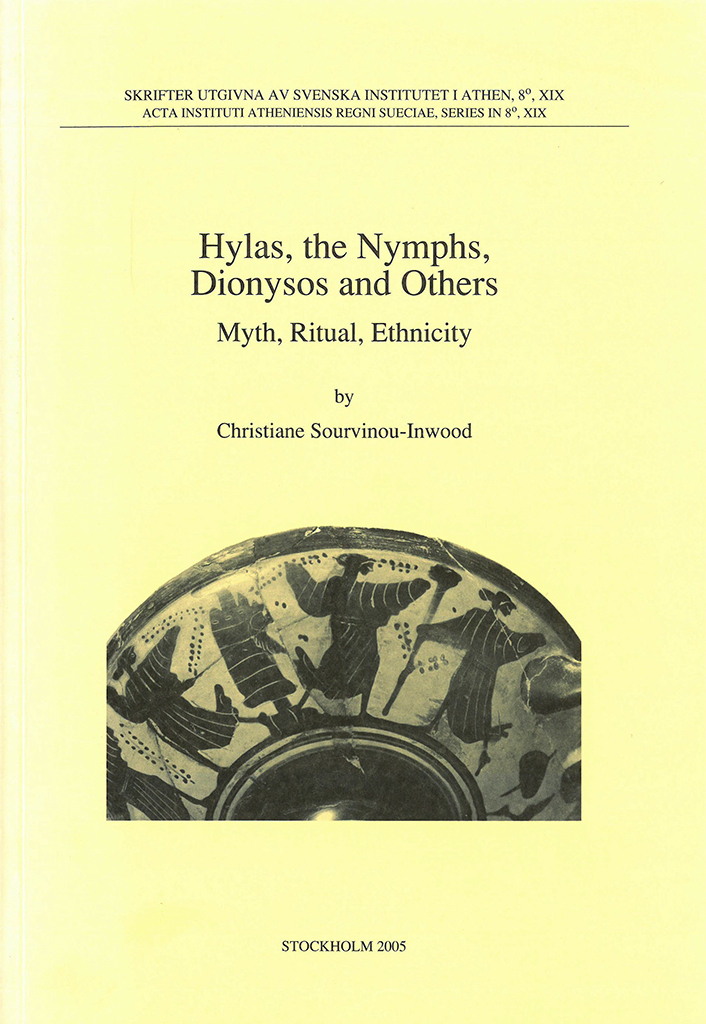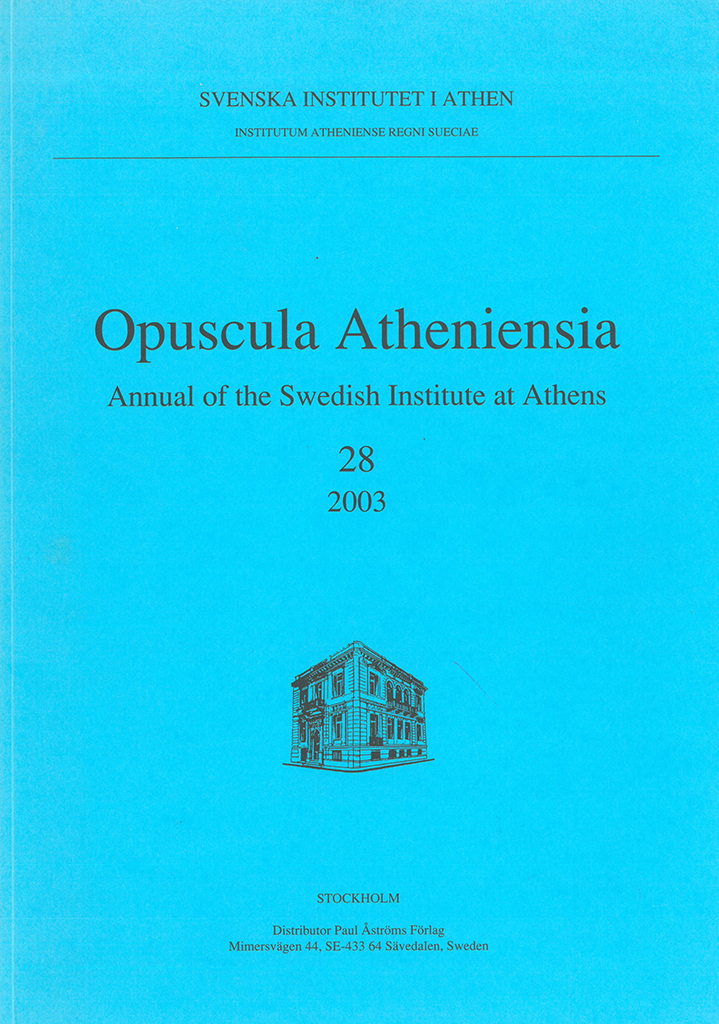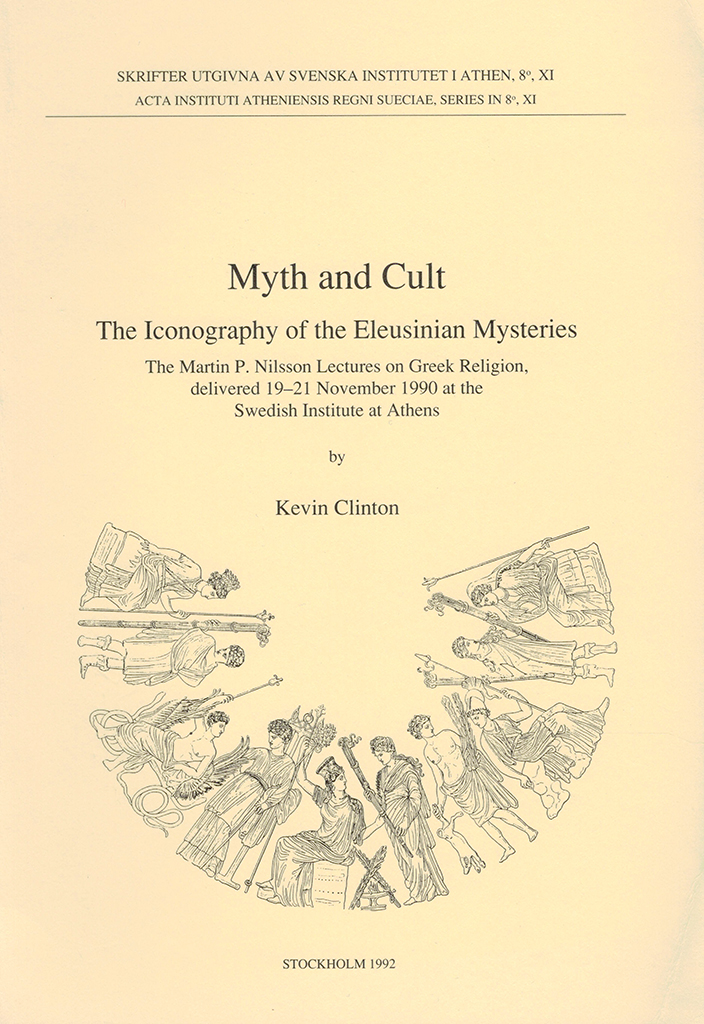Opuscula 6 (2013) is now available for purchase and free download at Bokorder.se. Also available at Amazon.com, Amazon.de, Bokus.com and Adlibris.com. The agency of Greek and Roman statues. From Homer to Constantine By Jan N. Bremmer Abstract In the Archaic period the Greeks did not yet conceptualize the difference between a divinity and its statue. Therefore, stories that stressed the agency of statues separate from their divinities must have seemed less strange at that time than when the statues had become independent, so to speak, from their gods or goddesses. The latter started to happen in the transitional period to the Classical era when the well-known triad of divinities—heroes—mortals came into being, and philosophers began to criticize the worship of statues. All these changes together led to a development in which the agency of statues increasingly became noteworthy. After the 5th century BC we keep hearing about the agency of statues but we can also notice a growing critique of the worship of statues by different philosophical schools. In both Greece and Rome divine statues manifested themselves in particular during moments of crisis or of a decisive political character. In the Greek East the belief in the agency of statues…
Distributed by Astrom Editions. Hylas, the Nymphs, Dionysos and others. Myth, ritual, ethnicity. Martin P. Nilsson Lecture on Greek Religion, delivered 1997 at the Swedish Institute at Athens By Christiane Sourvinou-Inwood The focus of this book is the reconstruction of the mythicoritual nexus of Hylas in Kios in Mysia through the in-depth investigation of the evidence (surviving in accounts by, and so shaped by the filters of, outsiders) and also of other issues implicated in its Problematik: ethnicity, cultural and religious interactions between Greeks and non Greeks, colonial discourses (with special emphasis on the foundation mythopoea of Kios’ mother city, Miletos), the nature and function of the Nymphs, the different personalities of Dionysos, advent festivals, certain problematic categories of cult recipients. Hylas’ myth and ritual had been constructed, I conclude, through complex interactions between several Greek mythicoritual schemata and included also elements that appear in non Greek nexuses located in the area of Kios. The myth was both a foundation myth constructing cultural continuity with the heroic age and an immortalization myth: a Greek youth was abducted by Nymphs and became a deity rooted in the landscape, symbolically rooting the colony to the land; it established a poiouchos figure unique…
Distributed by Astrom Editions. Contents Katie Demakopoulou, Nicoletta Divari-Valakou & Ann-Louise Schallin | Excavations in Midea 2002 (pp. 7-28) Berit Wells, Arto Penttinen & Marie Françoise Billot | Investigations in the sanctuary of Poseidon on Kalaureia 1997-2001 (pp. 29-87) Charles M. Adelman | The find group pottery from the Swedish excavations at Sina, Cyprus: significant sherds selected by Arne Furumark for his working notebook (pp. 89-171) Robert Parker | The problem of the Greek cult epithet (pp. 173-183) Birgitta L. Sjöberg | Settlement activity at Late Helladic Asine in the Argolid (pp. 185-201) Book reviews Lyvia Morgan | N. Marinatos, The Goddess and the Warrior. The naked goddess and Mistress of Animals in early Greek religion (pp. 203-204) Gunnel Ekroth | M. Deoudi, Heroenkulte in homerischer Zeit (pp. 204-207) Björn Forsén | Y.A. Pikoulas, Αρκαδια. Συλλογὴ μελετών (pp. 207-208) Björn Forsén | Y.A. Pikoulas, Λεξικό των οικισμών της Πελοποννήσου: παλαιά και νέα τοπωνύμια & F.A. Cooper (ed.), Houses of the Morea. Vernacular architecture of the northwest Peloponnesos (1205-1955) (pp. 209-210) Izabella Donkow | V. Tatton-Brown (ed.), Cyprus in the 19th century AD: fact, fancy and fiction. Papers of the 22nd British Museum Classical Colloquium, December 1998 (pp. 211-213) Books received…
Distributed by Astrom Editions. See record at WorldCat. Myth and cult. The iconography of the Eleusinian Mysteries. The Martin P. Nilsson Lectures on Greek Religion, delivered 19–21 November 1990 at the Swedish Institute at Athens By Kevin Clinton Iconography serves as the starting part for the treatment of central aspects of the myth and cult of the Eleusinian Mysteries. The presence of the Mirthless Rock in artistic presentations, its location in the sanctuary, and its relation to the Callichoron Well provide a perspective for assessing the aetiological elements in the Homeric Hymn to Demeter and the relation of the Hymn to Eleusis. The Iconography of Eubouleus, Iakchos, and Eumolpos is established, and that of Triptolemos and Ploutos is discussed extensively. The importance of Eubouleus in artistic representations is seen to correspond to his importance in the Mysteries, and the identification of him in certain scenes reveals his function in the myth of the Mysteries. Discussion of his role in the Thesmophoria leads to an examination of the relation of the Mysteries to the Thesmophoria. The various roles of all these figures in artistic representations provide a basis for revised interpretations of several works of art, and these interpretations are exploited…




